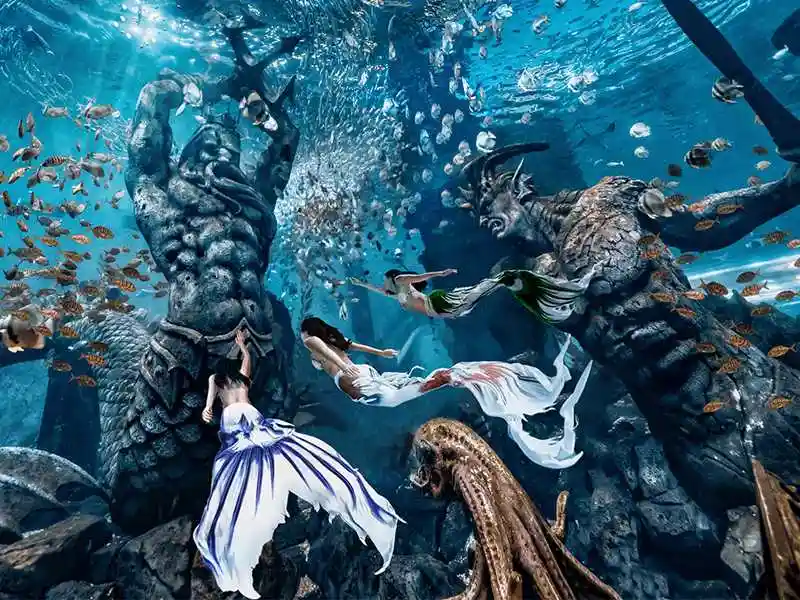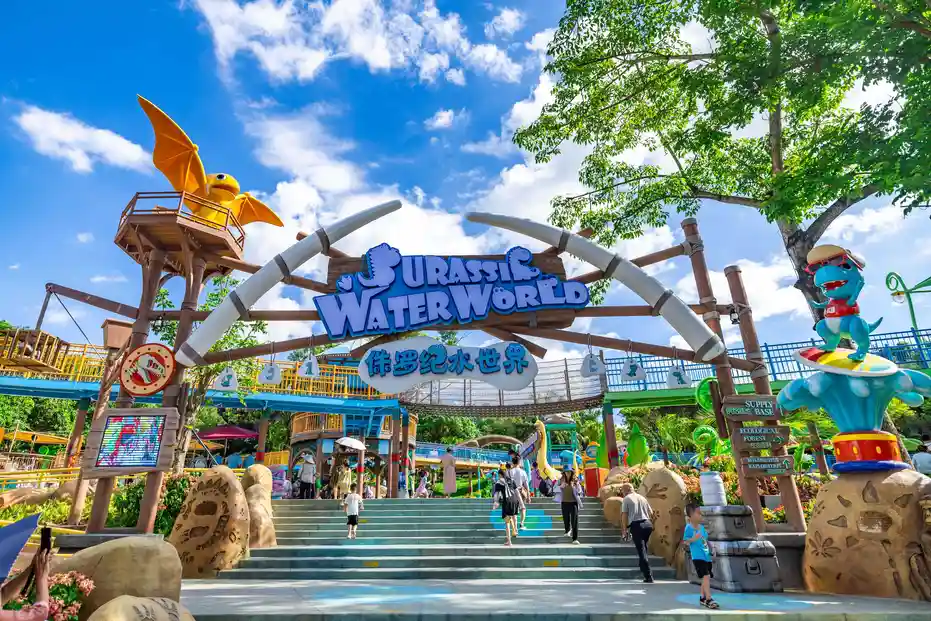Introduction: Diving into the Unknown
The ocean covers over 70% of Earth’s surface. Yet, we’ve explored less than 20% of its depths. Among the most captivating concepts in marine exploration is *Poseidon Underwater World*—a term symbolizing both myth and modern scientific curiosity.
Named after the Greek god of the sea, Poseidon represents mystery, power, and the unknown. Today, “Poseidon Underwater World” evokes images of advanced underwater habitats, deep-sea research stations, and futuristic visions of human life beneath the waves.
This article explores the real and imagined aspects of this concept. From cutting-edge marine technology to ecological wonders hidden in the abyss, we’ll uncover what lies beneath.
You’ll learn about deep-sea ecosystems, ongoing oceanographic projects, and how the idea of an underwater world inspires innovation. Whether you’re a science enthusiast or a curious explorer, this journey offers insight into one of Earth’s last frontiers.
Let’s dive in.
The Myth Behind the Name
Poseidon was the ancient Greek deity ruling the seas, earthquakes, and horses. Temples were built in his honor. Sailors prayed to him for safe passage.
His trident symbolized control over water. Storms and calm alike were said to follow his will. This mythological legacy lives on in modern culture.
Today, “Poseidon” is used to name ships, research vessels, and even fictional underwater cities. The phrase *Poseidon Underwater World* taps into that rich symbolism.
It suggests a realm both powerful and mysterious—where humans venture but do not yet belong. In branding and storytelling, it conveys adventure and discovery.
Even scientific missions use mythic names to inspire public interest. For example, NASA names space programs after gods. Oceanographers do the same.
Using mythology helps bridge imagination and reality. It makes complex science more relatable. And it fuels dreams of living under the sea.
What Is Poseidon Underwater World?
*Poseidon Underwater World* isn’t just a myth—it’s also a vision. Some interpret it as a proposed underwater habitat. Others see it as a metaphor for deep-sea exploration.
In recent years, several private companies and research groups have explored building submerged living spaces. These are often called “undersea colonies” or “marine research pods.”
One such project uses the name *Poseidon Underwater World* to describe a luxury eco-resort with fully submerged suites. Guests would sleep surrounded by coral reefs and tropical fish.
But beyond tourism, the term also applies to scientific endeavors. Think of autonomous labs on the ocean floor monitoring seismic activity or studying hydrothermal vents.
These installations collect data around the clock. They help predict earthquakes, track climate change, and discover new species.
While no single official facility currently bears the full name *Poseidon Underwater World*, multiple initiatives reflect its spirit.
Here’s a quick overview:
- Underwater Habitats: Temporary homes for scientists during deep-sea missions.
- Marine Research Stations: Permanent or semi-permanent bases for ocean studies.
- Eco-Tourism Projects: Resorts offering immersive underwater experiences.
- Robotic Exploration Hubs: AI-driven systems mapping uncharted zones.
Each brings us closer to realizing a true *Poseidon Underwater World*.
The Science of Living Beneath the Waves
Living underwater presents major challenges. Pressure increases rapidly with depth. At 10 meters, it doubles compared to the surface.
Human bodies aren’t built to withstand these forces long-term. That’s why engineers design pressurized habitats. These maintain safe internal conditions.
Another issue is air supply. Oxygen must be stored or generated. Carbon dioxide must be removed. Modern systems use electrolysis to split water into breathable oxygen.
Water and food are also critical. Some habitats recycle wastewater. Others rely on regular resupply from the surface.
Power comes from batteries, solar panels on surface buoys, or even tidal generators. Renewable energy is key for sustainability.
Communication is another hurdle. Radio waves don’t travel well through water. So, researchers use acoustic signals—sound-based messaging.
Despite obstacles, progress continues. Projects like **Aquarius Reef Base** off Florida show that extended stays are possible. Scientists live there for up to three weeks.
These missions test everything from equipment durability to psychological resilience. Lessons learned could apply to space travel too.
After all, both environments are isolated, extreme, and unforgiving.
Exploring Deep-Sea Ecosystems
The deep ocean hosts some of Earth’s most bizarre and resilient life forms. In total darkness, creatures adapt in extraordinary ways.
Bioluminescence is common. Fish, jellyfish, and squid produce their own light. They use it to attract prey, communicate, or confuse predators.
Hydrothermal vents spew superheated, mineral-rich water. Around them, entire ecosystems thrive without sunlight. Bacteria convert chemicals into energy—a process called chemosynthesis.
Species like giant tube worms, blind shrimp, and extremophile microbes call these vents home. Many have no known relatives elsewhere.
Cold seeps work similarly. Methane and hydrogen sulfide leak slowly from the seabed. Clams and mussels grow in dense beds.
These discoveries challenge old ideas about where life can exist. They even inform astrobiology—the search for life beyond Earth.
Understanding these ecosystems helps protect them. Many are vulnerable to mining and pollution.
A true *Poseidon Underwater World* wouldn’t just house humans. It would coexist with native marine life.
Preservation must be central to any future development.
Technologies Powering Underwater Discovery
Modern exploration relies on advanced tools. Remotely Operated Vehicles (ROVs) are among the most important.
ROVs are unmanned submersibles controlled from ships. Equipped with cameras, robotic arms, and sensors, they reach depths unreachable by divers.
Autonomous Underwater Vehicles (AUVs) operate independently. They map the seafloor using sonar and return data automatically.
Satellites monitor surface conditions. But for deep observations, nothing beats in-situ instruments.
Sensors measure temperature, salinity, pH, and oxygen levels. Some detect microbial activity or chemical leaks.
Underwater drones are becoming smaller and smarter. AI helps analyze footage in real time. This speeds up species identification and anomaly detection.
3D imaging allows scientists to reconstruct habitats digitally. Virtual dives let students and researchers explore remotely.
Even augmented reality is being tested. Imagine wearing AR glasses that label fish species as you swim.
All these technologies support the broader goal: creating a functional *Poseidon Underwater World* where humans can observe, study, and eventually reside.
Environmental Challenges and Conservation Efforts
The deep sea faces growing threats. Deep-sea mining is one of the most pressing concerns.
Companies seek minerals like cobalt, nickel, and manganese from the ocean floor. These are used in batteries and electronics.
But mining disrupts fragile ecosystems. Sediment plumes can smother life. Noise and light pollution alter animal behavior.
Plastic waste now reaches the deepest trenches. Microplastics have been found in marine organisms at record depths.
Climate change adds stress. Warming waters reduce oxygen levels. Acidification harms shell-forming species.
To counter these issues, conservationists push for Marine Protected Areas (MPAs). These restrict harmful activities in sensitive zones.
The UN’s **Biodiversity Beyond National Jurisdiction (BBNJ) Treaty** aims to protect 30% of the ocean by 2030.
Scientists advocate for precautionary approaches. Before building any *Poseidon Underwater World*, impact assessments are essential.
Sustainable design means minimizing footprint, using renewable energy, and avoiding disruption to wildlife.
Ecotourism models can fund research while educating the public. But they must be tightly regulated.
Only responsible innovation ensures the deep sea remains a source of wonder—not exploitation.
Innovative Projects Inspired by Poseidon
Several real-world initiatives echo the vision of *Poseidon Underwater World*. One notable example is **Proteus**, designed by Fabien Cousteau.
Shaped like a nautilus shell, Proteus aims to be the most advanced underwater research station ever built. It will include labs, living quarters, and a moon pool for easy access.
Another project is **Ocean Spiral** by Japanese firm Shimizu Corporation. It imagines a floating city connected to a spherical base on the seafloor.
This structure would generate energy from thermal differences in ocean layers. It could house hundreds of people.
Meanwhile, startups like **Blue Shift** develop compact underwater habitats for short-term stays. These target researchers, filmmakers, and eco-tourists.
Even NASA collaborates with ocean teams. The parallels between space and sea make the ocean a testing ground for extraterrestrial missions.
These projects prove that the dream of living underwater is gaining momentum. While still experimental, each step brings us closer.
And many draw inspiration directly from the legend of Poseidon—a reminder that myths can spark real innovation.
The Role of Education and Public Engagement
Public awareness drives policy and funding. Without interest, deep-sea science struggles to grow.
That’s why education matters. Documentaries, virtual tours, and school programs introduce young minds to ocean mysteries.
Interactive websites allow users to explore 3D maps of the seafloor. Apps identify marine species from photos.
Museums feature immersive exhibits. Some simulate diving in submersibles. Others recreate hydrothermal vent environments.
Citizen science projects invite participation. Volunteers analyze underwater images or report coastal changes.
Social media amplifies outreach. Scientists share daily logs from expeditions. Hashtags trend during major discoveries.
When people feel connected to the ocean, they’re more likely to support protection efforts.
A successful *Poseidon Underwater World* depends not just on technology—but on shared curiosity and responsibility.
Conclusion: Toward a Sustainable Future Beneath the Sea
The concept of *Poseidon Underwater World* blends myth, science, and ambition. It represents humanity’s desire to explore, understand, and inhabit the deep ocean.
From ancient legends to modern engineering, this vision continues to evolve. Real projects now mirror once-fictional ideas.
We’ve seen how technology enables deeper exploration. How unique ecosystems thrive in extreme conditions. And how environmental risks demand caution.
The future holds promise. Underwater habitats may soon support long-term research. Renewable systems could make them self-sustaining.
But success requires balance. Innovation must go hand-in-hand with conservation.
For independent site operators focusing on SEO, covering topics like *Poseidon Underwater World* attracts audiences interested in science, adventure, and sustainability.
To rank well, create content that’s informative, original, and structured for readability. Use related keywords naturally—like “deep-sea exploration,” “underwater habitats,” or “marine research stations.”
Focus on solving user intent. Answer questions. Provide value. And always cite credible sources.
The ocean is vast, mysterious, and full of stories waiting to be told. By sharing them responsibly, your site can become a trusted voice in the digital sea.



